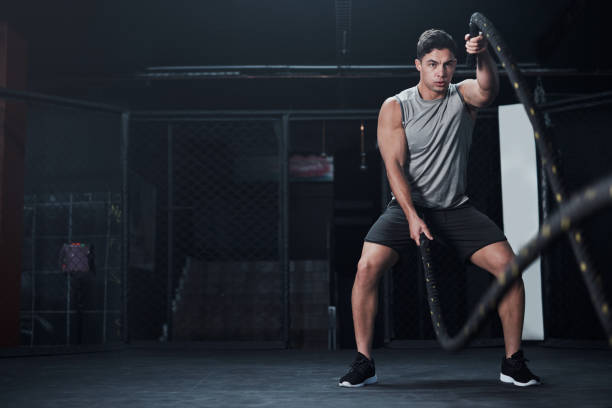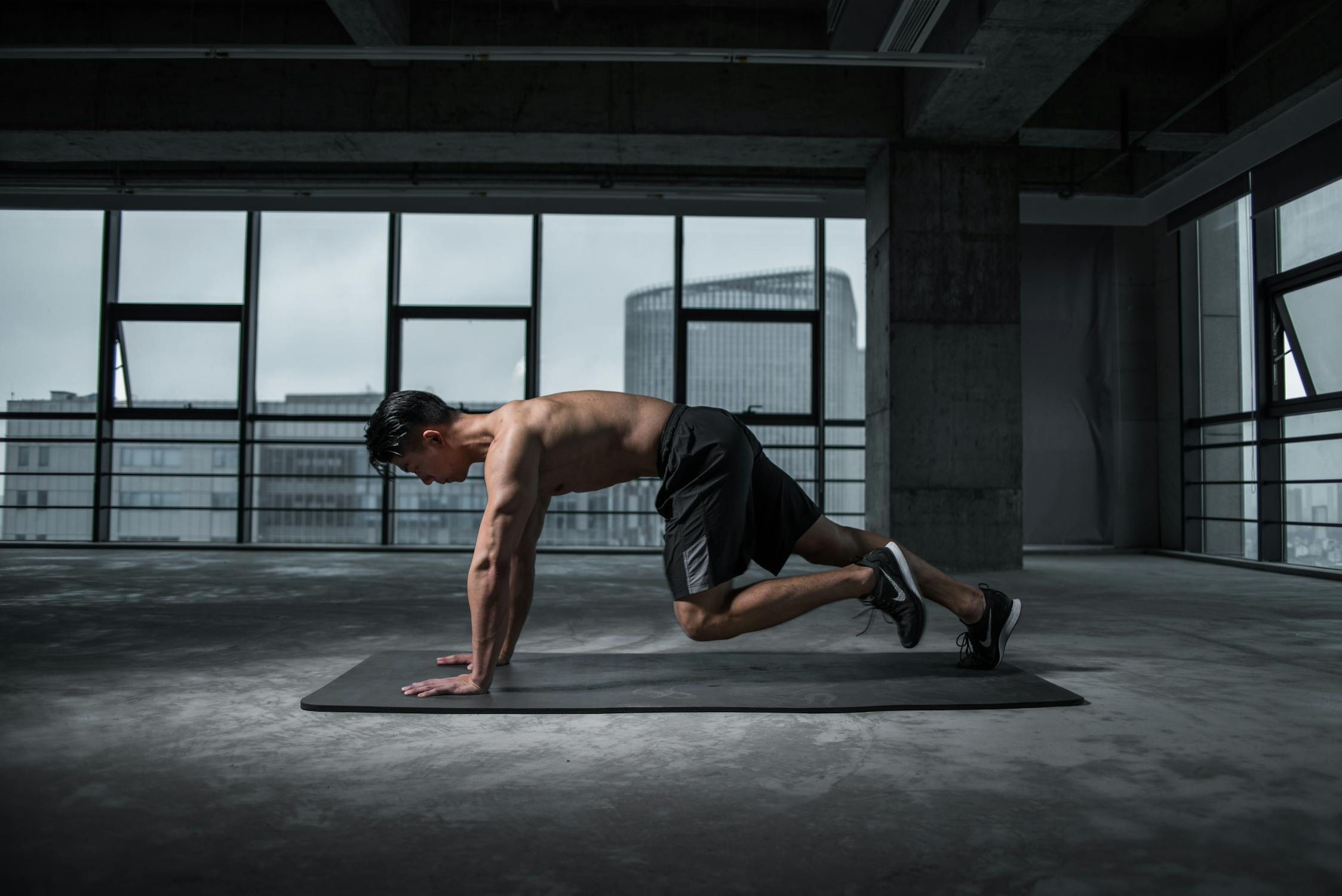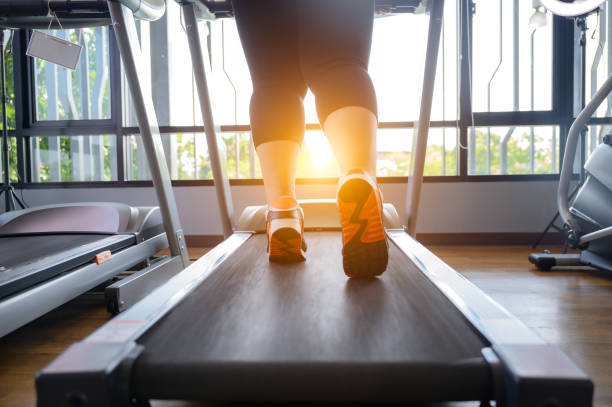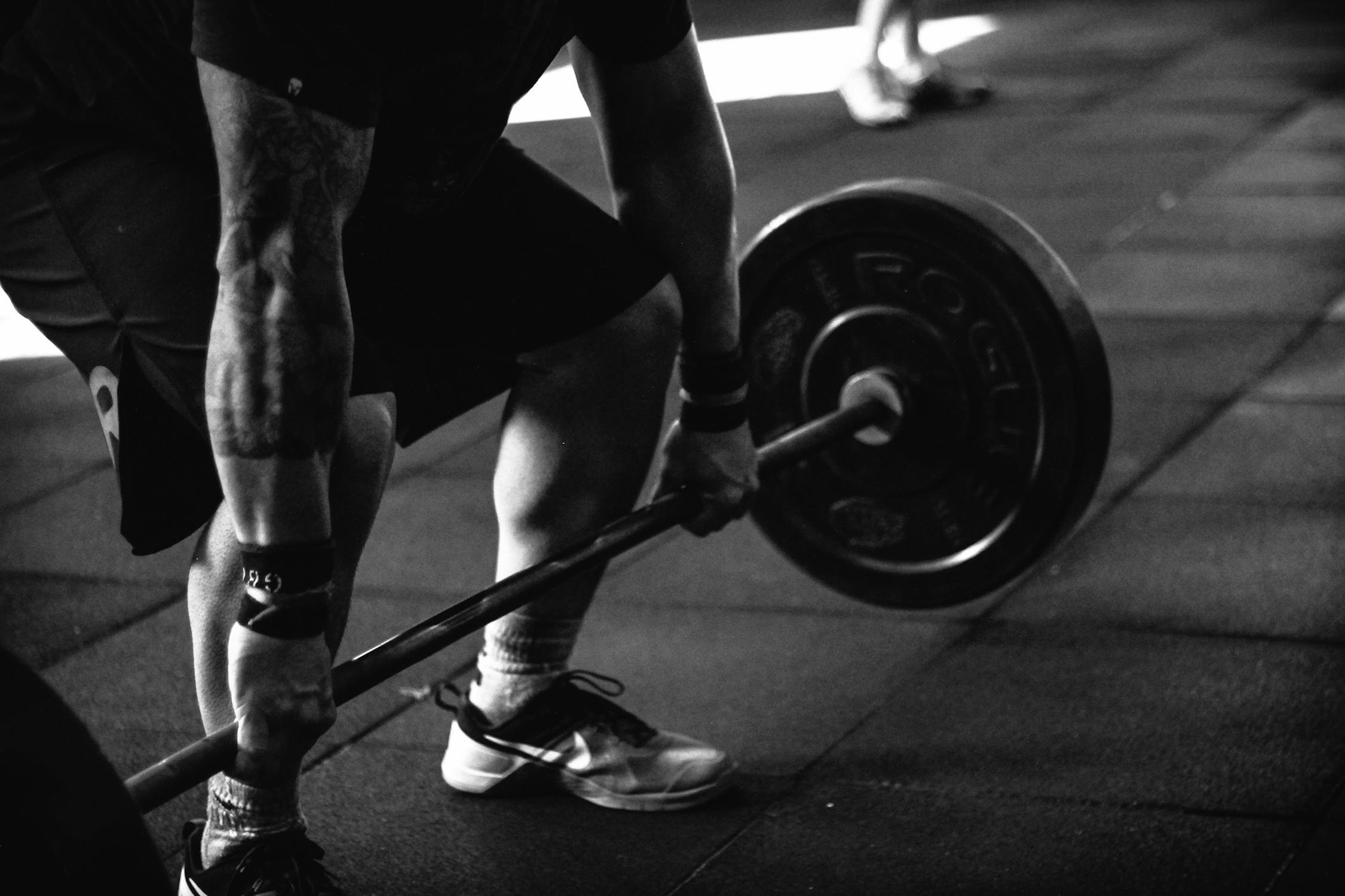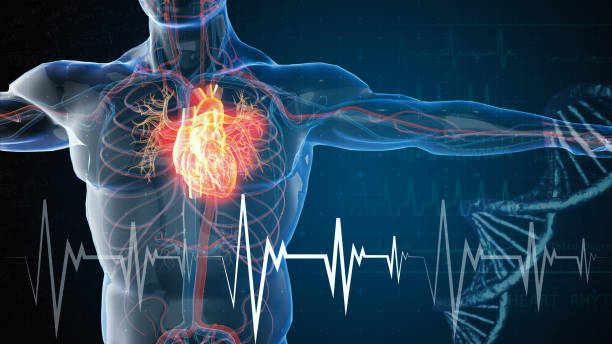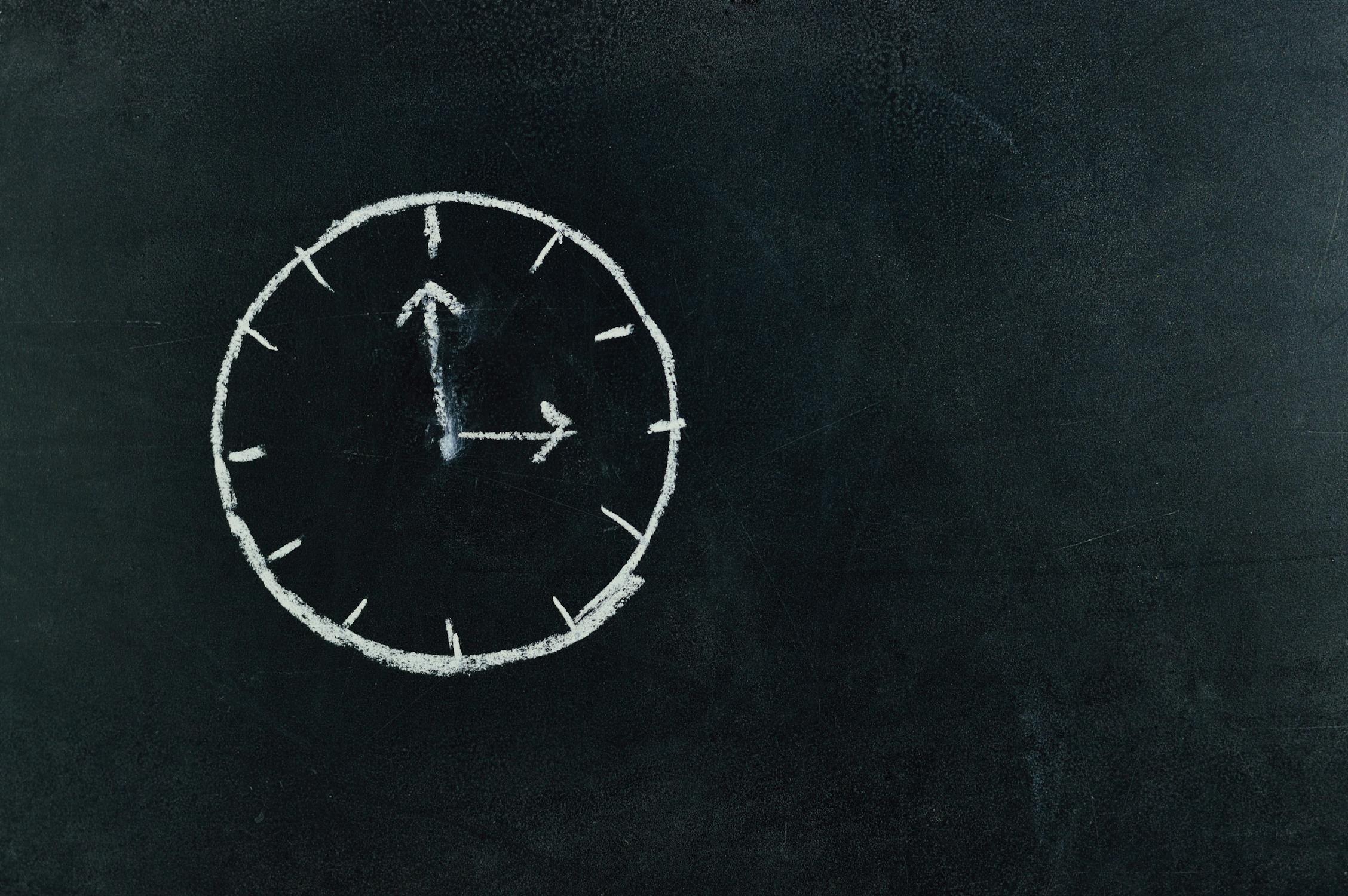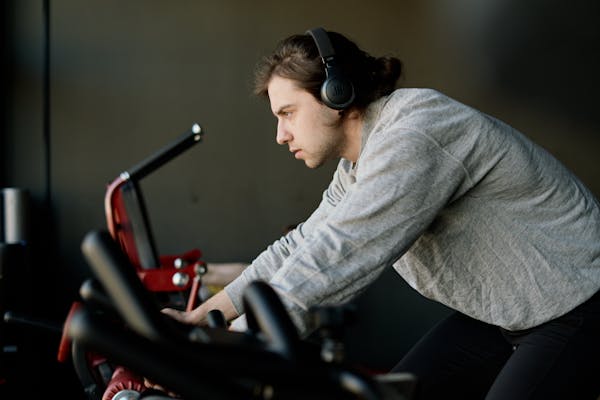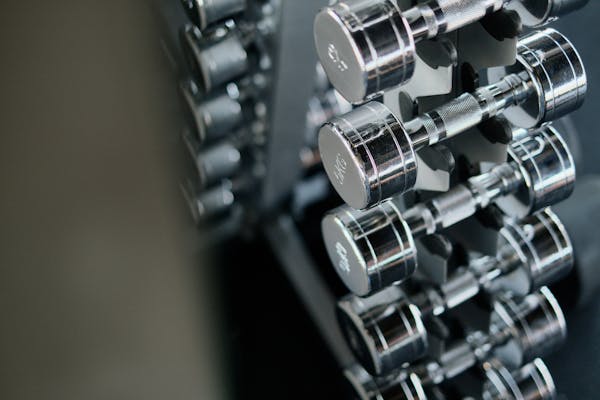Unleash the Power of High Intensity Interval Training: Boost Your Fitness, Health, and Weight Loss Goals
Introduction
You may have heard the term HIIT before, but what exactly does it mean? High-Intensity Interval Training, or HIIT, is a type of exercise that involves short bursts of intense activity followed by periods of rest. It's a highly efficient and effective way to improve your fitness and health.
But what sets HIIT apart from other types of exercise? For one, it's time-efficient. Rather than spending hours on the treadmill or stationary bike, you can get a killer workout in just a fraction of the time with HIIT.
Not only that, but HIIT is also incredibly versatile. You can do HIIT workouts with just about any type of exercise, whether it's running, cycling, weight lifting, or even bodyweight exercises like push-ups and squats. Plus, HIIT workouts can be customized to your individual fitness level and goals, making them suitable for beginners and advanced exercisers alike.
So why should you give HIIT a try? In the following sections, we'll delve into the specific benefits of this type of exercise and how it can improve your health and fitness. Trust us, you won't want to miss out on the numerous benefits of HIIT.
HIIT is not just a passing fitness trend - it's here to stay. And for good reason. This type of exercise has numerous benefits that make it worth incorporating into your fitness routine.
First and foremost, HIIT is great for burning calories. In fact, it's been shown to burn more calories in a shorter amount of time compared to traditional steady-state cardio. But the calorie-burning benefits of HIIT don't stop there. Many people experience an "afterburn effect," where the body continues to burn calories at an elevated rate even after the workout is over. This means you can continue to reap the calorie-burning benefits of HIIT long after your workout has finished.
But calorie burning is just the tip of the iceberg when it comes to the benefits of HIIT. This type of exercise has also been shown to improve cardiovascular health, increase muscle mass, and even boost brain function.
Ready to learn more about the numerous benefits of HIIT? Keep reading to find out how this type of exercise can improve your health and fitness.
Increased Calorie Burning
If you're looking to burn more calories in a shorter amount of time, look no further than HIIT. High-Intensity Interval Training has been shown to be more effective at burning calories than traditional steady-state cardio.
But how exactly does HIIT burn more calories? The key is in the intensity. During a HIIT workout, you're pushing yourself to your limits for short periods of time, which requires a lot of energy. This results in a higher calorie burn during the actual workout.
But the calorie-burning benefits of HIIT don't stop there. Many people experience an "afterburn effect," where the body continues to burn calories at an elevated rate even after the workout is over. This is due to the increased oxygen consumption and energy expenditure that occurs after a HIIT workout.
In other words, not only do you burn more calories during a HIIT workout, but your body also continues to burn calories at an increased rate long after your workout has finished. This makes HIIT a highly efficient and effective way to burn calories and improve your fitness.
One of the main benefits of HIIT is its ability to burn more calories in a shorter amount of time. And a big part of this calorie burn is due to something called the "afterburn effect."
So, what is the afterburn effect? Simply put, it's the increased oxygen consumption and energy expenditure that occurs after a HIIT workout. This means that your body continues to burn calories at an elevated rate even after the workout is over.
But how long does the afterburn effect last? It's hard to say exactly, as it can vary from person to person. Some research has shown that the afterburn effect can last up to 48 hours post-workout, while other studies have found it to be closer to 15-20 hours. Regardless of the exact duration, the afterburn effect can contribute to a significant increase in calorie burn over time.
In addition to burning more calories, the afterburn effect can also help improve cardiovascular function and increase muscle mass. So not only is HIIT a time-efficient way to burn calories, but it can also have long-lasting benefits for your overall health and fitness.
Increased Muscle Mass
In addition to burning calories and improving cardiovascular health, HIIT can also help build muscle. Wait, what? How can a workout that involves short bursts of intense activity build muscle?
The key is in the intensity. When you push yourself to your limits during a HIIT workout, you're putting a lot of stress on your muscles. This stress causes small tears in the muscle fibers, which then need to repair and rebuild themselves stronger than before. This process of tearing and repairing is what helps build muscle.
But HIIT isn't just good for building muscle - it's also great for maintaining muscle mass. As we age, our muscle mass tends to decline, which can lead to a decrease in metabolism and physical function. Regular HIIT workouts can help prevent this decline and maintain muscle mass, even as we get older.
So not only can HIIT help you burn calories, but it can also help build and maintain muscle mass. This makes it a well-rounded and effective way to improve your fitness and overall health.
In addition to helping build and maintain muscle mass, increased muscle mass also has numerous other benefits. For one, it can increase your metabolism. Because muscle tissue requires more energy to maintain than fat tissue, having more muscle mass can help boost your metabolism and make it easier to maintain a healthy weight.
Increased muscle mass can also improve physical function. Stronger muscles can make everyday tasks, such as carrying groceries or climbing stairs, feel easier. And for athletes and those who participate in physical activities, stronger muscles can lead to improved performance.
But the benefits of increased muscle mass don't stop there. Stronger muscles can also help protect against injury, improve posture, and even improve bone health.
So, not only can HIIT help you burn calories and improve cardiovascular health, but it can also help build and maintain muscle mass, which can have numerous other benefits for your overall health and well-being.
Improved Cardiovascular Health
In addition to burning calories and building muscle, HIIT can also have a positive impact on your cardiovascular health.
During a HIIT workout, you're pushing your heart and lungs to their limits. This can lead to improved cardiovascular function, as your heart and lungs become more efficient at delivering oxygen and nutrients to the muscles.
But the benefits of HIIT on cardiovascular health don't stop there. Studies have shown that HIIT can also have a positive impact on blood pressure, cholesterol levels, and other markers of heart health.
So, not only can HIIT help you burn calories and build muscle, but it can also improve your cardiovascular function and overall heart health. It's a win-win-win!
We've already discussed how HIIT can improve cardiovascular function, but what about its effects on specific markers of heart health, such as blood pressure and cholesterol levels?
Studies have shown that HIIT can have a positive impact on these and other markers of heart health. For example, one study found that HIIT led to a significant decrease in blood pressure in participants with hypertension. Another study found that HIIT improved cholesterol levels in overweight and obese individuals.
But the benefits of HIIT on heart health don't stop there. Research has also shown that HIIT can improve insulin sensitivity, which is important for preventing the development of diabetes. And for those who have already been diagnosed with heart disease, HIIT has been shown to be a safe and effective way to improve cardiovascular fitness.
So not only can HIIT improve your cardiovascular function, but it can also have a positive impact on specific markers of heart health, such as blood pressure and cholesterol levels. It's a powerful tool for improving overall heart health.
Time Efficiency
If you're short on time but still want to get in a good workout, HIIT might be the perfect solution. This type of exercise requires a much smaller time commitment compared to traditional steady-state cardio.
For example, a traditional steady-state cardio workout, such as jogging on a treadmill, might take upwards of an hour to complete. On the other hand, a HIIT workout can be completed in as little as 20-30 minutes.
But don't let the shorter time commitment fool you - HIIT workouts are just as, if not more, effective as traditional steady-state cardio. In fact, as we've discussed earlier in this article, HIIT has been shown to burn more calories in a shorter amount of time compared to traditional cardio.
So if you're looking for a time-efficient way to improve your fitness, HIIT might be the perfect solution. You can get a killer workout in just a fraction of the time it would take to do traditional steady-state cardio.
In today's fast-paced world, finding time for exercise can be a challenge. That's where HIIT comes in. This type of exercise is incredibly convenient for busy individuals, as it requires a much smaller time commitment compared to traditional steady-state cardio.
But the convenience of HIIT doesn't stop there. Because HIIT workouts can be done with just about any type of exercise, you can do them anywhere, at any time. This makes it easy to fit in a quick HIIT workout, even if you're on the go.
So, if you're a busy individual looking for a convenient and effective way to improve your fitness, HIIT might be the perfect solution. With its shorter time commitment and versatility, it's easy to fit in a HIIT workout no matter how busy your schedule.
Variety and Customization
One of the great things about HIIT is the variety of workouts available. Whether you prefer running, cycling, or bodyweight exercises, there's a HIIT workout for you.
For example, you could do a running-based HIIT workout by sprinting for 30 seconds and then walking for 30 seconds, repeating the pattern for a set number of rounds. Or, you could do a cycling-based HIIT workout by cycling at a high intensity for 30 seconds followed by a recovery period at a lower intensity.
But HIIT isn't just limited to cardio exercises. You can also do HIIT workouts with weight lifting exercises, such as kettlebell swings or dumbbell snatches. And for those who prefer bodyweight exercises, there are plenty of HIIT workouts that use exercises like push-ups, squats, and burpees.
The variety of HIIT workouts available means that there's something for everyone, no matter what your fitness preferences are. So why not give HIIT a try and see which type of workout is right for you?
In addition to the variety of HIIT workouts available, this type of exercise is also highly customizable to individual fitness levels and goals.
For example, if you're a beginner, you can start with shorter intervals and lower intensity levels and gradually increase as your fitness improves. On the other hand, if you're an advanced exerciser, you can push yourself with longer intervals and higher intensity levels.
This customization makes HIIT suitable for everyone, whether you're just starting out on your fitness journey or are an experienced athlete.
But HIIT workouts can also be customized to specific fitness goals. For example, if you're looking to build muscle, you might focus on HIIT workouts that incorporate weight lifting exercises. On the other hand, if you're looking to improve your cardiovascular endurance, you might focus on cardio-based HIIT workouts.
The ability to customize HIIT workouts to individual fitness levels and goals makes it a highly effective and versatile way to improve your fitness and reach your specific goals.
Equipment options that can be used for HIIT exercises
Treadmill - A treadmill can be used for running-based HIIT workouts, where you can vary the speed and incline to create intervals of high and low intensity.
Exercise bike - An exercise bike is another option for cycling-based HIIT workouts, where you can vary the resistance and speed to create intervals of high and low intensity.
Kettlebells - Kettlebells can be used for weight lifting-based HIIT workouts, such as kettlebell swings or goblet squats.
Dumbbells - Like kettlebells, dumbbells can be used for weight lifting-based HIIT workouts, such as dumbbell snatches or dumbbell lunges.
Jump rope - A jump rope is a simple, yet effective, tool for HIIT workouts that can be done using bodyweight exercises, such as jump rope intervals or burpee variations.
Resistance bands - Resistance bands can be used for bodyweight HIIT workouts, such as banded squats or banded push-ups.
These are just a few examples of the equipment that can be used for HIIT exercises. The key is to find equipment that works for you and your individual fitness goals.
Conclusion
In conclusion, HIIT is a highly efficient and effective way to improve your fitness and overall health. Its numerous benefits, including increased calorie burning, improved cardiovascular health, increased muscle mass, and time efficiency, make it a well-rounded and versatile form of exercise.
In addition to these benefits, HIIT is also convenient for busy individuals and offers a variety of workouts that can be customized to individual fitness levels and goals.
So if you're looking for a time-efficient and effective way to improve your fitness, consider giving HIIT a try. With its numerous benefits and versatility, it's a powerful tool for improving your health and well-being.

